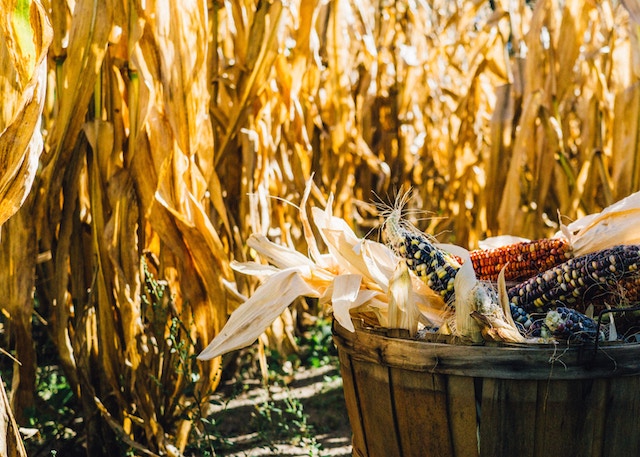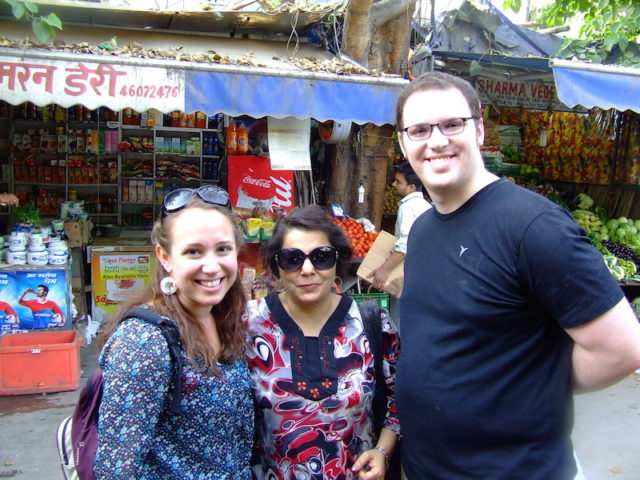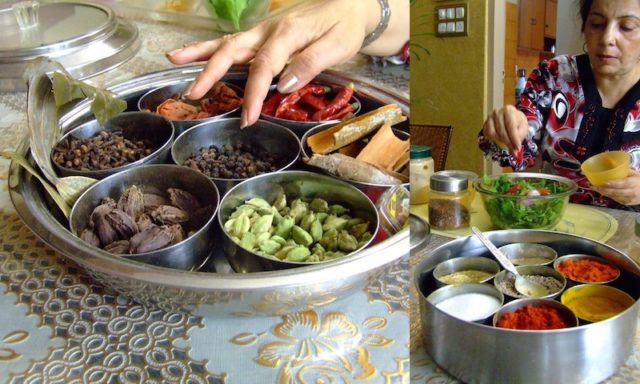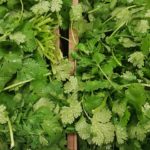Traveling Foodie: Soaking Up the Spices with Indian Cooking

“If variety is the spice of life, then my life must be one of the spiciest you ever heard of. A curry of a life.” – Julia Child, on moving around the world so much in her experience with the US foreign service; My Life in France
“Indian cooking,” Jyoti explained, “is some of the best in the world, because each dish combines all 5 tastes: sweet, salty, sour, bitter, and umami (savoriness).” After 10 days traveling around Northern India, my husband Keith and I were not about to argue with her.
We hadn’t had a bad meal yet, and were so enamored with the food that we signed up for an Indian cooking class in Delhi. And so, we spent our last day in India cooking up a curry storm in Jyoti’s kitchen, where we gained not only a booklet-full of authentic recipes, but also some insight into Indian and American perspectives.
Every good Indian cook has two spice boxes, she explained: one for whole spices, and one for ground.

- Keith, my husband, me, and Jyoti.
First things first: the food! The base of all Indian cooking is (unsurprisingly) spice. But what intrigued us was Jyoti’s spice boxes. Every good Indian cook has two spice boxes, she explained: one for whole spices, and one for ground. And all the spices were as fresh as could be, unlike in the US where we buy a jar of turmeric and leave it in the spice cabinet for six years. She promised to take us to her spice vendor after the class, and she did.
The next important thing to know about Indian cooking is its flexibility. You can use a recipe for butter chicken, say, and easily substitute paneer for a veg option. In a vegetable curry, use whatever you have on hand or is in season. Adjust the spice to your taste – Jyoti even introduced us to a mild red pepper called kashmiri mirch that has plenty of flavor but little heat, perfect for our wimpy tastebuds. We chopped and sautéed, ground spices and sipped chai, all under the watchful eyes of Jyoti and with the help of her house staff.
We chatted about life in New York and the US and life in Delhi, and I experienced one of those marvelous encounters when one realizes the narrowness of one’s own world view.
Once we had reached a point in the cooking where things needed to cook for a bit, we retired to the salon with some more chai (“But how many cups have you had today, Rachel?” Jyoti asked. “Three?” I sheepishly replied. “No sleep for you tonight,” she warned. A small price, I concluded, to taste some more of her chai.)

- Jyoti’s spice boxes.
As much as I loved cooking with Jyoti and exploring her market with her later, it is that quick break in her salon that I remember the most. We chatted about life in New York and the US and life in Delhi, and I experienced one of those marvelous encounters when one realizes the narrowness of one’s own world view.
Jyoti had traveled to New York before, and loved the city. “You are so lucky!” she said. We asked what she meant, specifically. “Well, “ she said, “you have such good public amenities. There are trash cans on every corner – you don’t have to carry your trash with you or throw it in the street. “And,” she added, “The public restrooms! Here I have to think about what I am drinking before I leave the house; you, you know you will always be able to find a good toilet.”
I had many conversations during our trip in India, but this was one of the most interesting, because it focused not on politics or history or even social mores, but on these small distinctions that evidenced significant and engrained variations in our world views.
Jyoti was middle class (upper, perhaps), but in a country with very few haves and infinitely more have-nots, that meant a great deal. She had two young men helping her in the house that day, and seemed to make regular use of other household staff. And still, public trash cans and toilets seemed like a marvelous luxury to her, and we hardly thought of them at all.
We agreed we were quite lucky to have those things, now that we thought about it. Still, we pointed out, there were some things that were frustrating about life in NYC. Not having a car for one. Laundry, for another. We explained that we did not have laundry in our building, and had to take our laundry to the laundromat several blocks away. “Oh, that is annoying,” she agreed. “How often do you go?”
“About every two weeks,” we replied. Her eyebrows shot up towards her hairline.
“That means you have to have at least two weeks worth of clean clothes to wear at one time? How terrible!”
Jyoti, upper middle class Indian, envious of our access to public trash cans and thinking how terrible it must be for us to “have” to own so many clothes.
Here we were viewing the laundry as a hardship; and she interprets the hardship as having to own enough clothes to go so long between washings. I didn’t tell her I had enough clothes to easily go a month without doing laundry; I figured I ought not make her feel any worse for us.
What different perspectives we had! Us, middle class Americans, amazed by her household staff and thinking how much work it must be to wash one’s clothes every few days or even daily. Jyoti, upper middle class Indian, envious of our access to public trash cans and thinking how terrible it must be for us to “have” to own so many clothes.
Traveling Foodie: Soaking Up the Spices with Indian Cooking
I had many conversations during our trip in India, but this was one of the most interesting, because it focused not on politics or history or even social mores, but on these small distinctions that evidenced significant and engrained variations in our world views.
We left Jyoti’s that day with full stomachs, recipe booklets, a small suitcase worth of spices and sweets, and quite a lot to think about. A few years later, I’ve used up the spices and forgotten most of Jyoti’s notes on her recipes – as I realized when I recently tried to recreate a few! But I still try not to complain about my laundry commute, and I have even remembered to be thankful for the little things, like public trash cans, that we all too often take for granted.
Traveling Foodie: Soaking Up the Spices with Indian Cooking
Related Reading
India Travel Tips: Danielle’s Take on Health, Safety and Romance
Have you traveled to India? What were your impressions? Email us at [email protected] for information about sharing your experience and advice with the Pink Pangea community. We can’t wait to hear from you.
Traveling Foodie: Soaking Up the Spices with Indian Cooking photo credits: Rachel Romesburg Rice and Unsplash.








